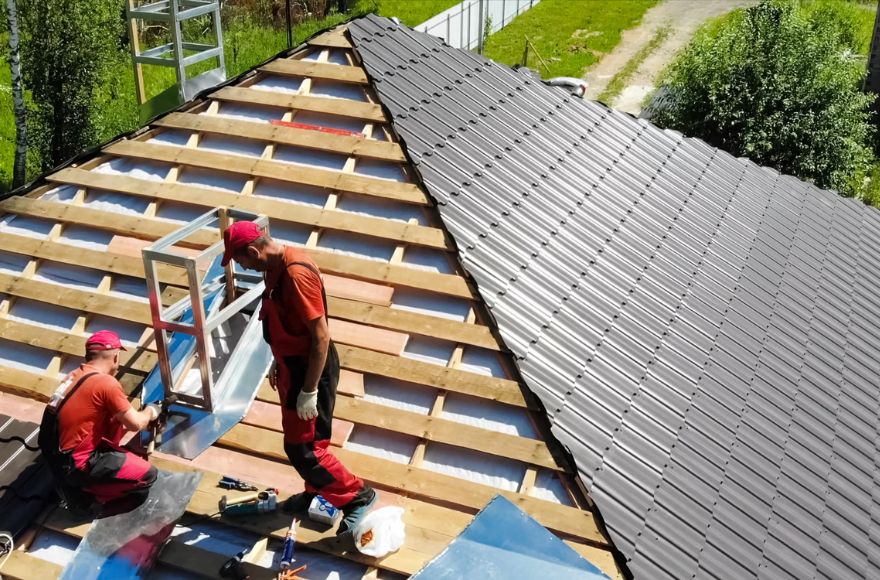DIY Guide: Fixing a Leaky Roof on Your Own
Mastering Roof Repair: A Comprehensive DIY Guide to Fixing Leaks in Shingles, Asphalt, and Tiles
Unveiling a leaky roof might feel overwhelming, yet armed with advice from a professional Luton handyman, you can confidently address the issue, averting the potential of it evolving into a costly nightmare. In this comprehensive DIY guide, we’ll cover the causes of roof leaks, how to find them, and step-by-step instructions for repairing common roofing materials like shingles, asphalt flat roofs, and tiles.

Causes of Roof Leaks
Major factors
- Age: Over time, roofing materials succumb to the effects of nature, reducing durability and increasing the risk of leaks.
- Damaged Chimney: Cracks in bricks or a damaged chimney crown can lead to leaks.
- Flashing Issues: Incorrectly installed or damaged flashing (metal sheeting) in vulnerable areas can create gaps for water penetration.
- Missing Shingles/Tiles: Storms or other factors can dislodge tiles or shingles, compromising the roof’s integrity.
- Holes: Any holes in the roof, whether from wear or damage, can cause leaks.
- Clogged Gutters: Blocked gutters prevent proper water drainage, leading to water buildup on the roof.
- Skylight Problems: Incorrect installation or substandard materials in skylights can result in leaks.
How to Find Roof Leaks
Daytime Attic Inspection
- Use a flashlight in the attic during the day.
- Walk only on support beams.
- Start from where the leak appears inside.
- Look for signs of water damage, mold, or dampness on support beams.
- Check for daylight shining through holes.
- Once found, inspect the rest of the roof for damage.

How to Fix a Leaky Roof
Repairing Shingles
Materials Needed:
- Replacement shingles, pry bar, hammer, roofing nails, roofing adhesive.
Steps:
- Lift damaged shingle.
- Remove old nails.
- Lift the shingle above.
- Slide or cut and place the replacement shingle.
- Fasten with nails and apply roofing adhesive.
Fixing Asphalt Flat Roof
Materials Needed:
- Patching kit, primer, paintbrush, scissors, flat roof roller.
Steps:
- Clean the damaged area.
- Apply primer around the damaged area.
- Cut and apply the self-adhesive patch.
- Press it down and smooth with a roller.
Repairing Tiles
Materials Needed:
- Replacement tile or roofing sealant, hammer, pry bar, tile clip or roofing nails.
Steps:
- Assess damage; if cracked, apply sealant and press down.
- If beyond repair, lift the tile above.
- Remove or smash the damaged tile.
- Replace with a new tile and secure.
Preventive Measures
- Professional Roof Inspection: Hire reputable roofing professionals for repairs you’re not confident doing.
- Gutter Maintenance: Keep gutters clean to ensure proper water drainage.
- Annual Roof Inspection: Check for damage, especially after storms.
- Attic Insulation: Ensure proper insulation and ventilation in the attic.
Conclusion
In conclusion, while repairing or replacing a roof can be time-consuming and expensive, regular maintenance and prompt DIY repairs can extend its lifespan. If you’re unsure about your ability to carry out repairs safely, consider hiring a professional to avoid compromising your safety. Remember, investing in professional help is better than risking your well-being.
- How do I troubleshoot common appliance issues before calling a handyman for repair? - January 12, 2024
- Plumbing Woes? DIY Fixes and Pro Tips to Keep Your Home Flowing Smoothly - January 12, 2024
- DIY Guide: Fixing a Leaky Roof on Your Own - January 12, 2024
